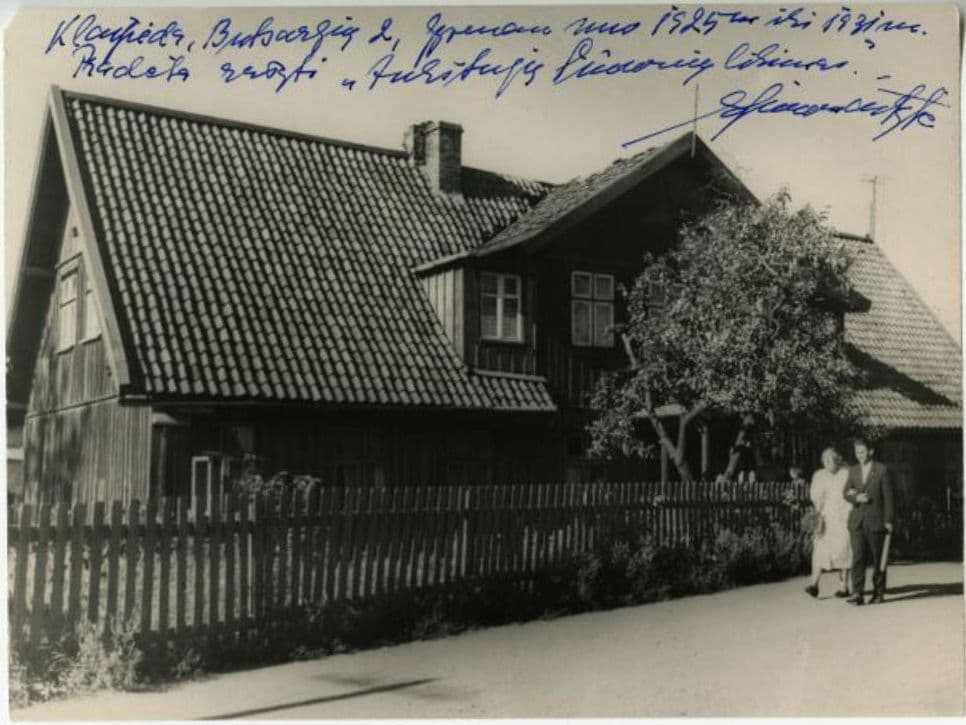“I loved you, Klaipėda…”

This route was dedicated to the 120th birth anniversary of Ieva Simonaitytė, the writer of Klaipėda region. The writer lived in Klaipėda in 1921–1938.
We will take a walk on the streets of Klaipėda that still remember the feet of the great writer. The young 23-year-old Ieva Simonaitytė arrived to Memel, which was ruled by the French at that time, on 2 January 1921, accompanied by her mother. The city offered her new opportunities. Because of health issues since her early age, Ieva was unable to attend school and thus was home-schooled by her mother and books. Upon arriving to Klaipėda, she hoped to find a new job, because in her home village of Vanagai, she either used to babysit relatives’ children and herd geese, or simply work as a maid. Meanwhile, in the city she hoped to become an office worker rather than a maid – those were the dreams of the young writer, who had just began her creative path. In truth, she was invited to Klaipėda by Ansas Bruožis, who worked as a secretary at the Consulate in Klaipėda.
Thus, Ieva Simonaitytė spent her first night in the city at the home of an acquaintance Vilius Šaulinskis, owner of Lituania print house, who is believed to have lived on Šaulių Street. And, as it was promised, she was hired at the office of the Consulate (referred to as the Lithuanian Representative Office at that time) on Žvejų Street already the next morning. Her dream had become true – she became an office worker.
However, her home was yet to be found. Soon she moved to stay with her distant relative Marė Jokamaitytė, who had married a worker, named Endrat and lived not far from the Pigs market on Kūlių Vartų Street. However, tired of the abuse of her relative’s drunken husband, Ieva Simonaitytė was forced to move out and rented a new place on the very same Kūlių Vartų Street at the widow Gertrud Nieswand. Her life often revolved around Kūlių Vartų Street. Since all of her belongings could fit into a single basket, moving wasn’t an issue, but it took a while to find a better place to live. She used to stay in attics, as well as cold and damp rooms until 1925.
Despite all of these hardships in searching for a dwelling, she eventually found luck and moved into a separate, light and warm room on Butsargių Street in 1925.
This was where she wrote Aukštųjų Šimonių likimas (The Fate of the High Šimonys). Later she moved to Tilžės Street, where she wrote her novel Vilius Karalius.
While living in Klaipėda, Ieva Simonaitytė worked at various institutions: Rytas printing-house as an editor, at the editorial office of Prūsų lietuvių balsas, later – the Directorate of Klaipėda District and at the Small Parliament as a typist and translator. She studied at an evening School of Commerce, as well as typewriting and stenography courses. Also, visited the home of the artist Adomas Brakas and was treated at the Red Cross Hospital.
In 1938–1939 she was treated in Switzerland. In 1939 Adolf Hitler annexed Klaipėda region and thus the writer did not return. For some time she stayed in Telšiai, later – Kaunas, and permanently moved to Vilnius in 1963, spending her summers in Priekulė, where she had built a summer cottage in 1961.
The writer vividly described her life in Klaipėda in her autobiographical novel Nebaigta knyga (Unfinished Book), which was the main source in the development of this route. Unfortunately, many of the buildings are already gone.
Travelling on this route you will get to know Kūlių Vartų, Tilžės, Žvejų, Turgaus and Herkaus Manto streets, which still remember the footsteps of the great writer. You will also not only see the buildings, where Ieva Simonaitytė lived, worked and studied, but also find out some interesting details of her life.
The route consists of 12 objects, located in Klaipėda old town and on Herkaus Manto Street. The route on foot will take 1.5 hours and its length is 2 km. The route begins at Klaipėda County Ieva Simonaitytė Public Library (Herkaus Manto Street 25).